Now, the US Strategic Command says that bombers can be more effective when they fly from their home bases on the American continent. They can still deploy when needed in the Pacific, it is argued, but from the Americas, they can respond more quickly to other potential hot spots like the Persian Gulf.
"The United States has moved to an approach that allows strategic bombers to operate forward into the Indo-Pacific region from a wider range of overseas locations, when necessary, and with greater operational resilience as these bombers are permanently based in the United States, "Major Kate Atanasoff, spokesman for the US Strategic Command, said in a statement.
The military argument
From a military point of view, American analysts say that this decision is very logical.
"The consistency and predictability of the deployment (to Guam) raised serious operational vulnerabilities. A planner in the Chinese military could easily have found ways to destroy the bombers because of their well-known presence," said Timothy Heath, principal researcher in international defense at RAND. Think Tank Corp. in Washington.
"Guam's withdrawal reduces" target footprint "to the threat of Chinese and North Korean ballistic missiles," said Carl Schuster, former director of operations at the US Pacific Command Joint Intelligence Center.
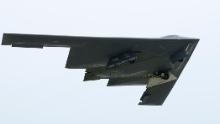
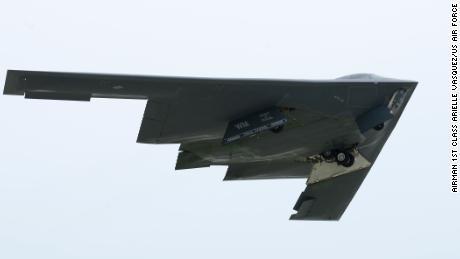
And the withdrawal of the bombers should reassure allies like Japan and South Korea, analysts said.
"Tokyo and Seoul, among other Asian allies and partners, are likely to be encouraged by the evidence that the United States is taking its defense obligations seriously and improving the deterrence and readiness of the main combat forces through actions such as the end of CBP, "said Heath.
The main assets, in the form of bombers, will be out of reach of a possible first strike from the opponents. But armed with long-range missiles and supported by aerial tankers, they can be back in action in the Pacific in less than a day from their continental bases in places like North Dakota and Louisiana, Schuster said.
To illustrate this point, Air Force dispatched a B-1 bomber from its South Dakota base on a 30 on Wednesday - One hour round trip to Japan, where he teamed up with Japanese F-15 and F-2 fighters as well as American F-16 planes for a training exercise.
"This operation highlights our unwavering commitment to the security and stability of the Indo-Pacific region through the use of strategic forces from around the world," said General CQ Brown, Jr., Commander Air Force Pacific American, in a press release.
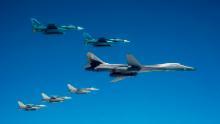
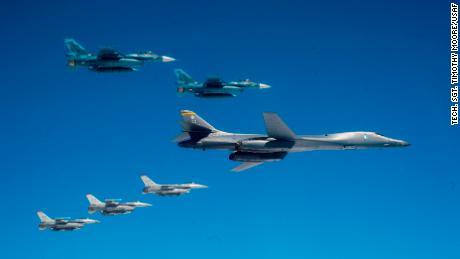
"We remain a lethal force, innovative and interoperable, focused on a common vision of maintaining a free and open lndo-Pacific," said the general.
Schuster said that while bombers are underway from the Americas, the U.S. military maintains sufficient firepower in the region - including F-35, F-16 and F-15 fighters in Japan and ships of war and submarines armed with Tomahawk cruise missiles - facing the first stages of any conflict.
And American allies and partners also have their own highly capable forces, said Schuster.
"This decision also marks confidence in their defense capabilities," he said.
The perceptions
But then there is the optics. The perception is important and it is to be feared that the abolition of the presence of bombers in Guam will not be seen as Washington wishes.
"War games are very expensive; we paid for the vast majority, we fly Guam bombers," said Trump.
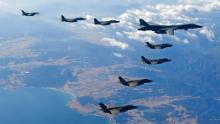
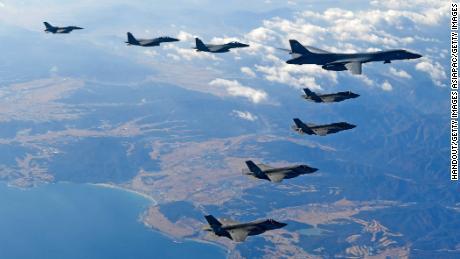
"These large, massive planes have been flying to South Korea for a long time to train, then drop bombs everywhere and then return to Guam. I know a lot about planes, it's very expensive," he said. -he adds.
Comments like these have raised eyebrows about Trump's engagement in the Pacific, and for some, the bomber movement off Guam exacerbates this sentiment.
"The end of CBP sends a clear strategic message to the United States' allies in the Pacific. Little by little, the United States is leaving," said Peter Layton, former Australian Air Force officer and analyst at Griffith Asia Institute.
"It is not reassuring. Instead, it is rather a reminder that times are changing," he said.
"The very public withdrawal from CBP appears to have been deliberately programmed to strengthen regional perceptions of a booming China and a withdrawal from America," said Layton.
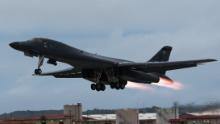
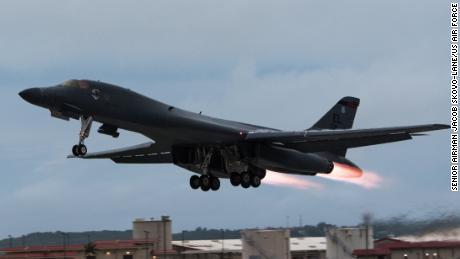
Since its creation in 2004, the continuous presence of bombers on Guam has concerned the projection of highly visible forces.
As recently as February, the Air Force boasted of the presence of a B-52 deployed to Guam which was participating with dozens of Japanese and other American aircraft in training "consistent with US policies. long-standing and well-known freedom of navigation. "
Guam bombers have been used in such operations over the South China Sea as well as in flights over the Korean peninsula to demonstrate the determination of the United States at the height of tensions with North Korea .
Flights over and around South Korea have often drawn fiery responses from Pyongyang.
"Gangster-like US imperialists are constantly using their unrestrained nuclear threat and blackmail to smother the DPRK with nuclear weapons at all costs," an article from the Korean Central News Agency said after bombers B-1 from Guam flew over the South. in 2017.
A Pacific showcase
Guam also provided a unique location to highlight the range and extent of the US bomber fleet.
Twice, the US Air Force brought the three types of bombers to Andersen Air Force Base at the same time, providing impressive images and videos to accompany the events.
These types of displays continued until last week, when the Air Force did an "elephant ride" at Andersen Air Force base. This involved what the Air Force called an "elephant ride", aligning the range of aircraft at the base, including the B-52s, the KC-135 tankers and the Air Force drones and de la Marine, on one of its tracks.
"The Elephant Walk has the availability and ability to generate combat air power at all times to provide regional stability across the Indo-Pacific," said the Air Force.
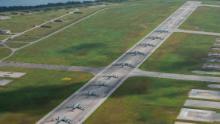
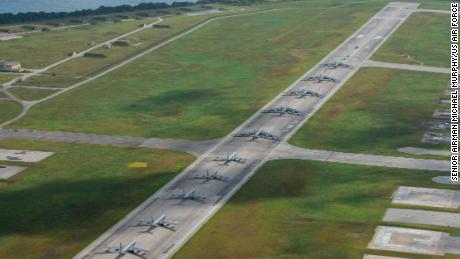
While the bombers' withdrawal puts such screens on the table for the time being, analysts said the Pentagon will still have to find ways to remain visible in the sky over the Indo-Pacific.
"US officials will have to work harder to reassure the allies and the region that the temporary absence and unpredictability of the American presence represents an increase in American engagement in the region, not a decrease," said Heath.
Schuster hopes the bombers will be back.
"We will stage bombers through Guam periodically," said the former US Navy captain. "Sometimes they will participate in exercises with our allies and partners, sometimes they will continue to the Indian Ocean via the South China Sea."
The unpredictability of random deployments "will also make it difficult for bad actors to make decisions," said Schuster.
But Layton sees a slippery slope towards American disengagement.
"It is a reminder of a truism in history: one day the empires leave," he said.
